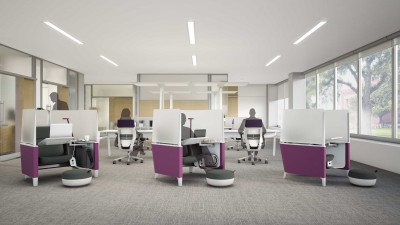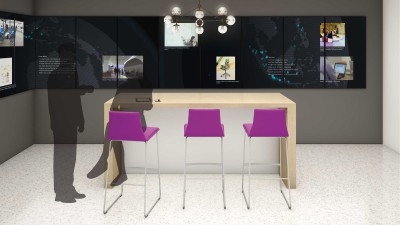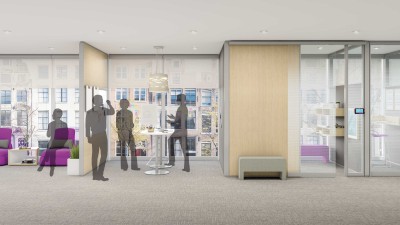In workplaces throughout the world, scenarios of near-constant distraction have become the norm. Thankfully, our ability to focus is still salvageable. As a result of the vast amount of neuroscience research being done, there’s now hard evidence about what attention is, how it works, how to attain it and how to use it productively. By delving into the findings, Steelcase researchers have gained new insights into how our brains shape thoughts, emotions and behaviors, and then applied this new science to create concepts for how thoughtfully designed workplaces can help workers better manage their attention and think better at work.
“As demands on people’s attention grow, it is becoming more and more important to optimize our cognitive resources. By studying the findings of neuroscientists, we’re realizing that knowing more about how our brains shape our physical, cognitive and emotional wellbeing is bringing more clarity to understanding human needs in the workplace. We’re learning what we can do with all this new science to help people think better at work.” – Donna Flynn, Vice President, Workspace Futures, Steelcase
HOW SPACE CAN HELP
The way to increase productivity and creativity is not about always trying to do more focused work or put in more hours, conclude Steelcase researchers. Instead, it’s about getting smarter about the brain, learning its limitations as well as how to leverage it to full capacity to direct our attention, and inspire and challenge us in different ways throughout the workday. Steelcase researchers and designers have identified three brain modes that each require distinct behaviors and settings:
FOCUS

Deep focus requires avoiding unwelcome external and internal distractions. Layers of boundary—from fully enclosed spaces to micro lounge settings—enable users to control external stimuli—sound, sightlines, lighting and temperature to their individual preferences.
REGENERATION + INSPIRATION

Although self-regulation is necessary for controlled attention it’s important to recognize that distractions can be opportunities to give our brain the timeout it needs and then let our minds go where they will. Easy access to colleagues, nourishment and places to rest the mind helps cognitively-overwhelmed workers gain a new perspective.
ACTIVATION

Physical activity has proven to stimulate the brain. Provide easily accessible settings that encourage workers to move throughout the workday to activate their minds and also take care of their bodies.These settings incorporate opportunities for movement—whether a stand-up brainstorm session or a walk during a conference call, this activity refreshes the mind as well as the body.
Want to learn more? Check out these resources:
Read the full article: Think Better
Audio Story: Think Better
Think Better: A Conversation with Beatriz Arantez
Listen to an interview with Steelcase Senior Design Researcher and Environmental Psychologist Beatriz Arantes as she discusses how to maintain attention at work and why working shorter hours is key to keeping pace with work demands today.

